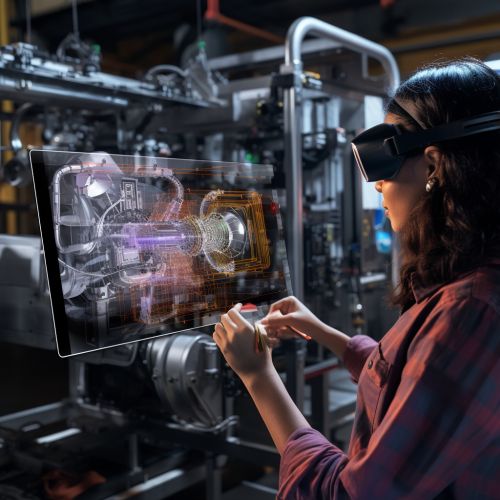The Role of Augmented Reality in Industrial Maintenance
Introduction
Augmented Reality (AR) is a technology that overlays digital information onto the real world, enhancing the user's perception and interaction with their environment. In the context of industrial maintenance, AR has the potential to revolutionize the way maintenance tasks are performed, offering significant improvements in terms of efficiency, safety, and cost-effectiveness. This article explores the role of AR in industrial maintenance, discussing its applications, benefits, challenges, and future prospects.
Definition and Overview of Augmented Reality
AR is a technology that superimposes computer-generated images and information onto a user's view of the real world, thereby enhancing their perception of reality. It differs from Virtual Reality (VR) in that it does not create a completely artificial environment, but rather overlays digital information onto the existing environment.


AR can be delivered through various devices, including smartphones, tablets, smart glasses, and headsets. These devices use sensors, cameras, and algorithms to capture the user's environment and overlay relevant digital information onto it. This information can take various forms, including text, images, 3D models, and animations.
The Role of Augmented Reality in Industrial Maintenance
AR has found a wide range of applications in the field of industrial maintenance. These applications leverage the ability of AR to provide real-time, contextually relevant information to maintenance personnel, thereby enabling them to perform their tasks more efficiently and effectively.
Guided Maintenance
One of the primary applications of AR in industrial maintenance is guided maintenance. With AR, maintenance personnel can receive step-by-step instructions overlaid onto their field of view, guiding them through complex maintenance tasks. This can significantly reduce the time and effort required to perform these tasks, as well as the likelihood of errors.
Remote Assistance
AR can also facilitate remote assistance. Using AR devices, a maintenance technician on the ground can share their view with a remote expert, who can then provide guidance and support. The expert can overlay instructions and annotations onto the technician's view, helping them to diagnose and resolve issues more quickly and effectively.
Training and Education
AR can play a significant role in the training and education of maintenance personnel. By providing a hands-on, immersive learning experience, AR can help trainees to acquire and retain knowledge more effectively. It can also provide a safe environment for them to practice and hone their skills.
Benefits of Augmented Reality in Industrial Maintenance
The use of AR in industrial maintenance offers a number of benefits, including improved efficiency, enhanced safety, and reduced costs.
Improved Efficiency
By providing real-time, contextually relevant information, AR can help maintenance personnel to perform their tasks more efficiently. It can reduce the time required to diagnose and resolve issues, as well as the likelihood of errors. This can result in significant time and cost savings.
Enhanced Safety
AR can enhance the safety of maintenance personnel by providing them with real-time warnings and safety instructions. It can also enable them to visualize and interact with potentially hazardous scenarios in a safe, controlled environment.
Reduced Costs
By improving efficiency and reducing errors, AR can help to reduce the costs associated with industrial maintenance. It can also reduce the need for physical travel, as it enables remote assistance and collaboration.
Challenges and Future Prospects
While AR holds great promise for industrial maintenance, it also presents a number of challenges. These include technical challenges, such as the need for accurate and reliable tracking and registration, as well as organizational challenges, such as the need for change management and user acceptance.
Despite these challenges, the future prospects for AR in industrial maintenance are bright. With ongoing advances in technology and a growing recognition of its benefits, the adoption of AR in this field is likely to continue to grow.
